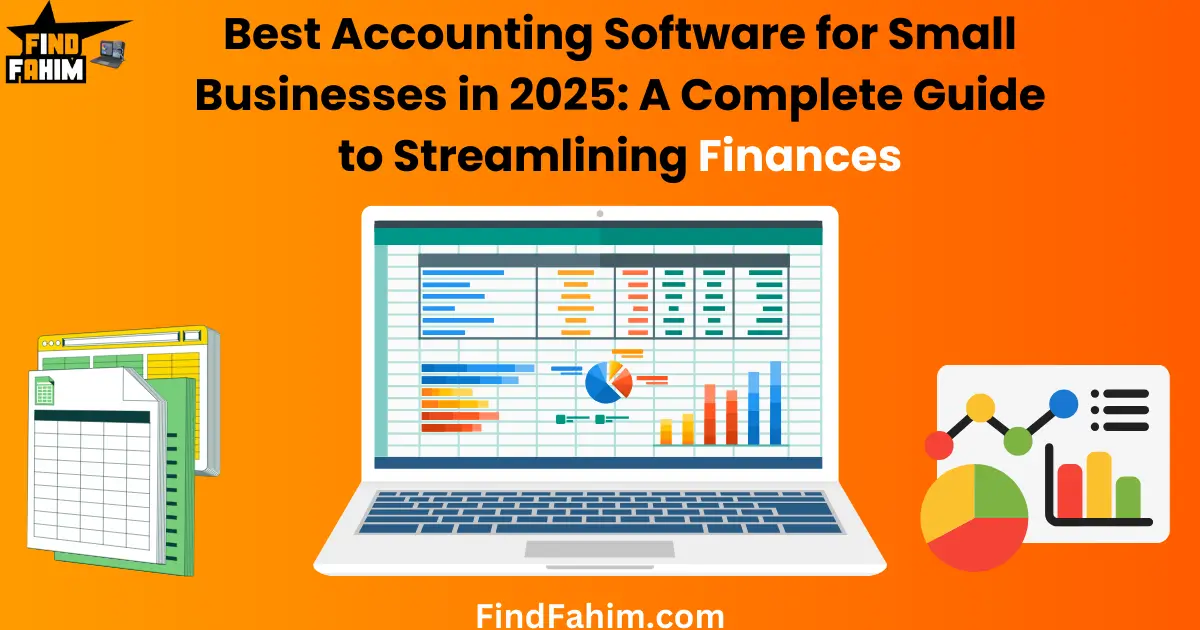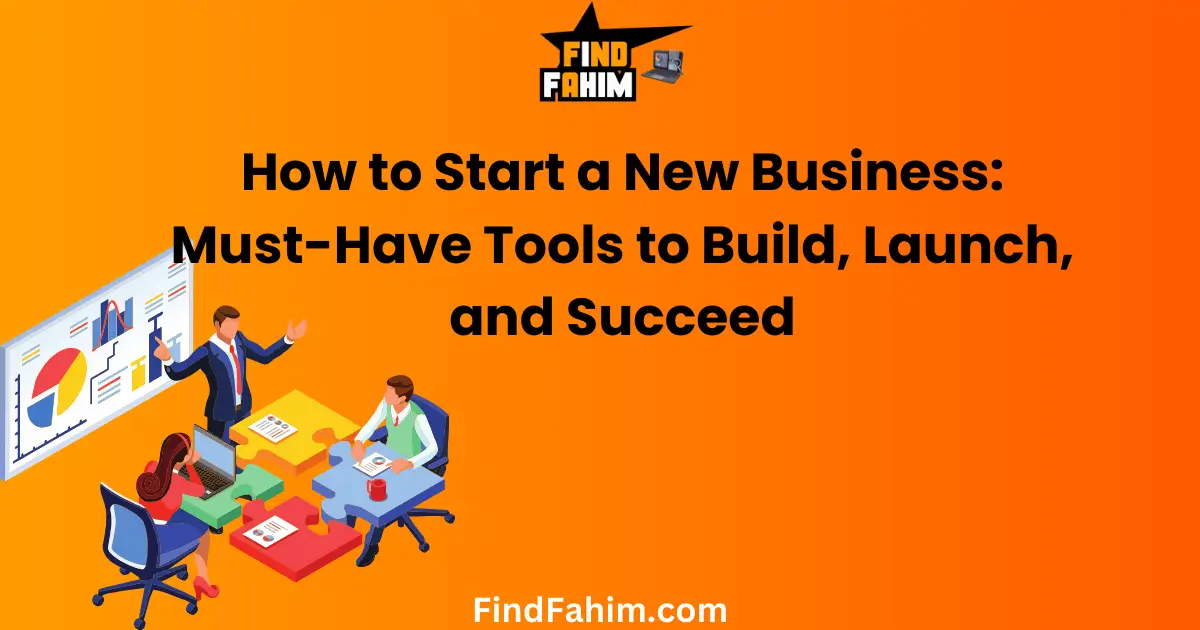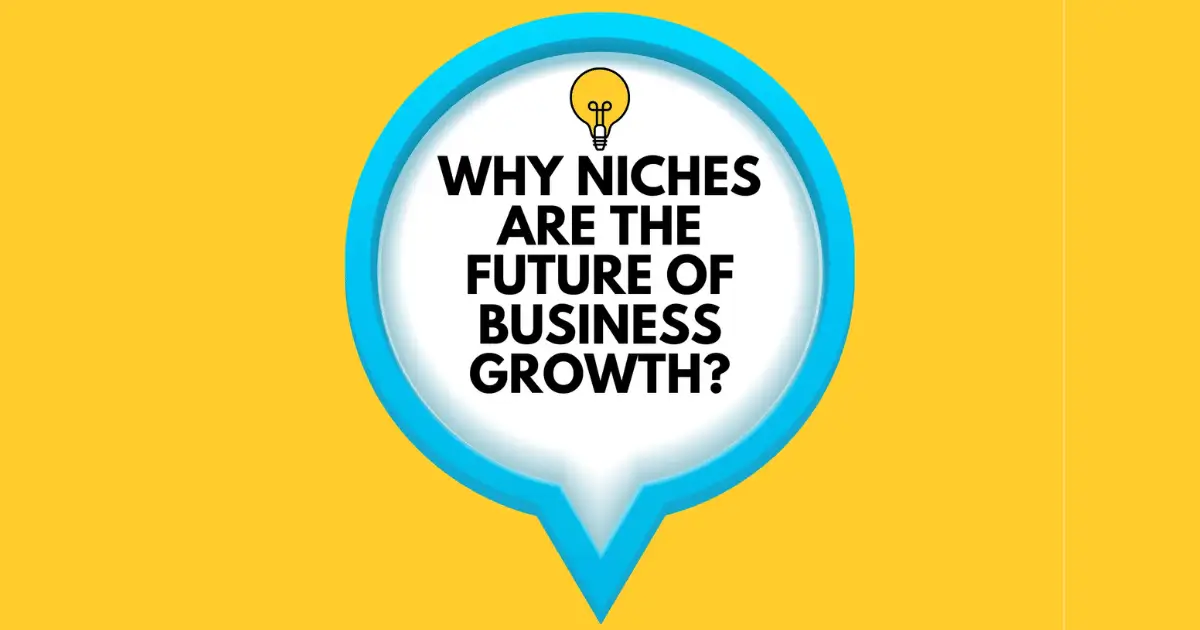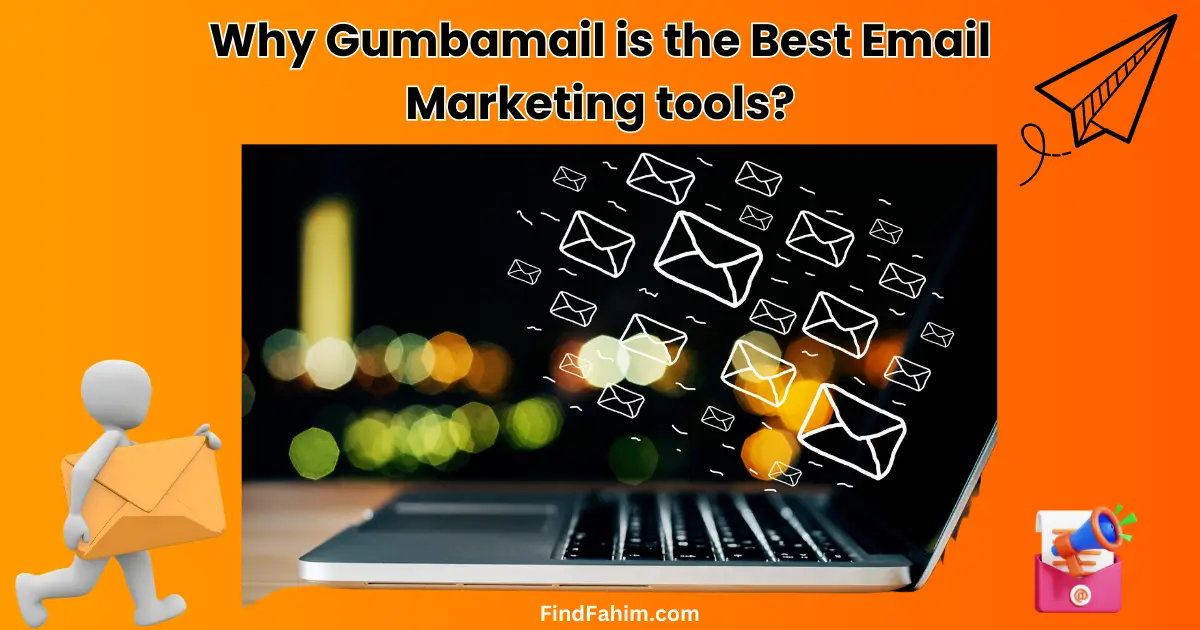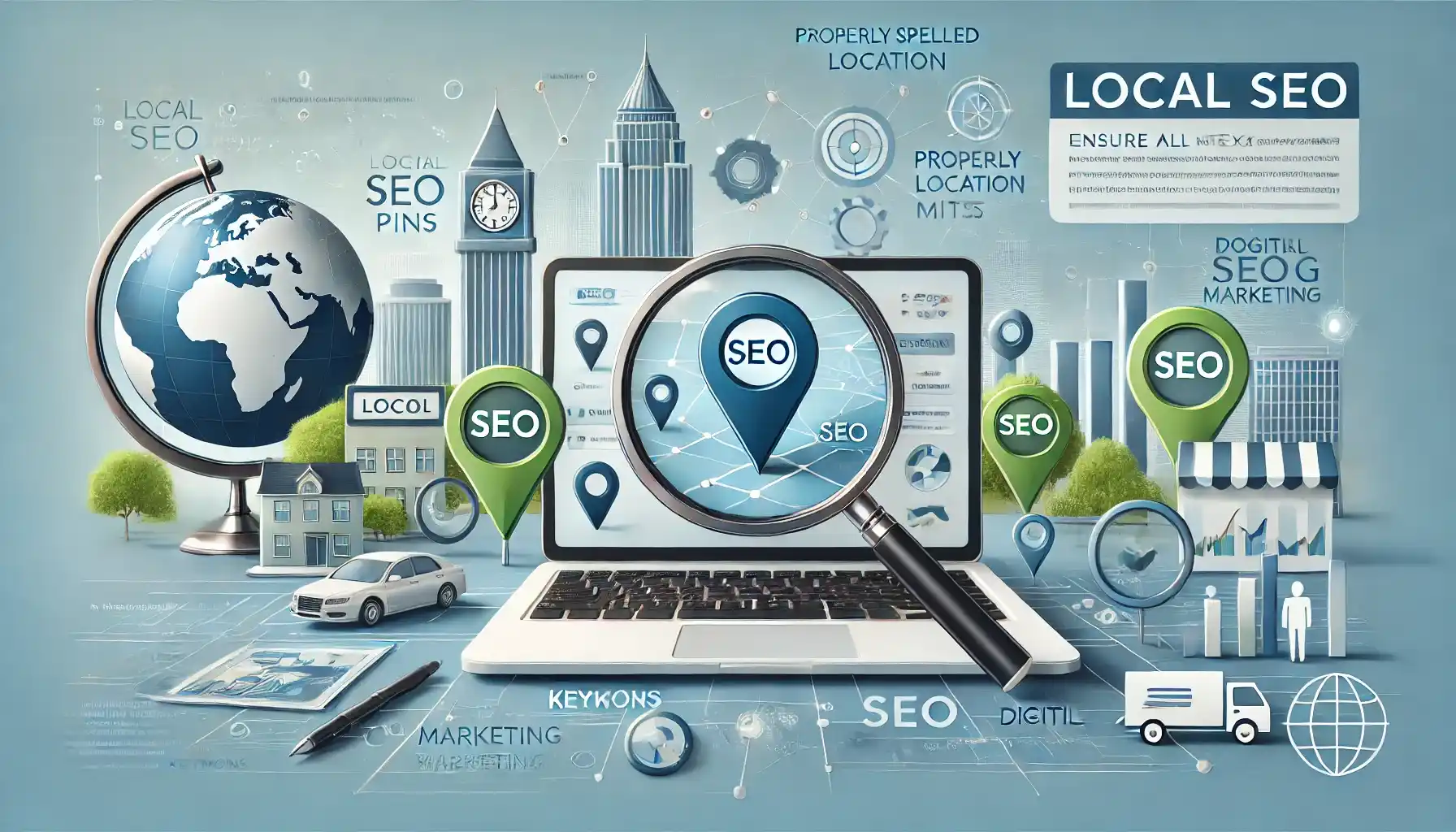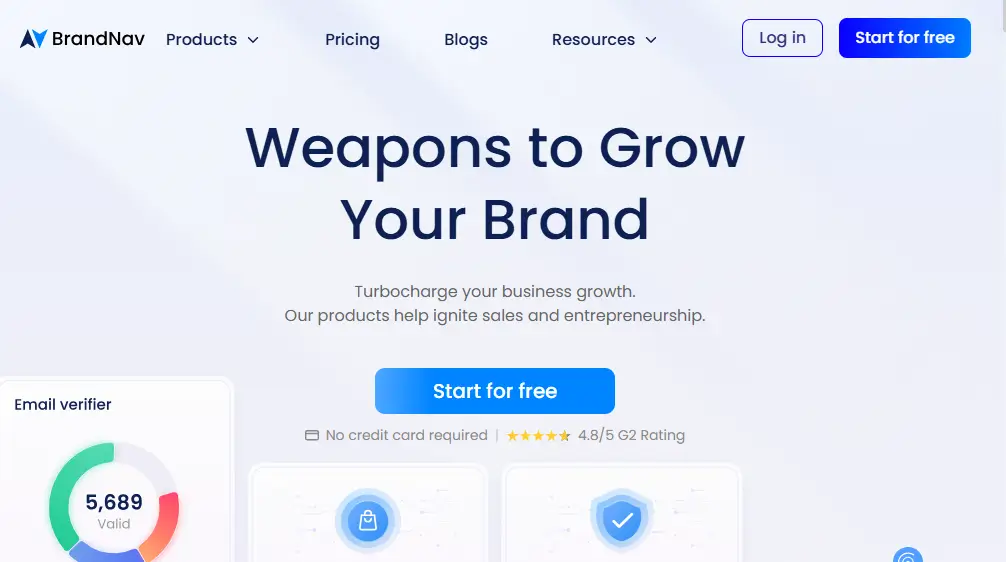Why Social Media Marketing Matters In today’s fast-paced digital era, social media isn’t just an option—it’s a necessity. With billions of users across platforms like Facebook, Instagram, TikTok, and LinkedIn, a strategic social media presence can make or break a brand’s visibility. Businesses in competitive hubs like New York City, Toronto, and Los Angeles are thriving by implementing tailored social media marketing strategies that resonate with their local audiences. Our expertise spans 15 major cities and provinces, Gain local insights to drive engagement, brand awareness, and ROI. Whether you’re targeting tech-savvy audiences in Seattle or diverse demographics in Toronto, our strategies ensure measurable results tailored to your market. The Power of Social Media Marketing What Is Social Media Marketing? Social media marketing involves creating, sharing, and optimizing content on platforms to achieve branding and marketing goals. It’s a mix of creativity, data-driven decisions, and audience understanding. This approach allows brands to: Engage customers through personalized content. Reach specific demographics with targeted ads. Enhance visibility by tapping into viral trends. Why It Matters for Cities Like Toronto and New York Cities like New York and Toronto have bustling, dynamic markets. Here’s why social media is crucial: New York City: With millions of potential customers, businesses can stand out by creating event-driven, culturally relevant campaigns. Toronto: A multicultural hub, Toronto offers a unique opportunity to craft content that reflects diverse communities, driving deeper connections. Key Focus Areas: Engage customers with social media in Toronto: Build campaigns that speak to the city’s diversity. Effective social media marketing for Los Angeles brands: Utilize influencer collaborations to amplify brand reach. Why Social Media Marketing is Essential for Businesses Benefits of Social Media Marketing Increased Brand Awareness: Platforms like Instagram and Facebook put your business in front of new audiences every day. Example: A small bakery in Vancouver reached 3x more customers by showcasing behind-the-scenes stories. Improved Customer Engagement: Real-time interactions foster trust and loyalty. Example: A local store in Seattle leveraged TikTok challenges to boost engagement by 40%. Higher ROI: With the ability to target specific demographics, social media marketing outperforms traditional ads. Cost-effective campaigns on platforms like TikTok or Facebook ensure better returns on investment. Competitor Insights: Understanding what competitors are doing in cities like Atlanta or Miami helps fine-tune your strategy. Targeted Approach to 15 Key Cities and Provinces Why Location Matters Every city and province has its unique market trends, audience behaviors, and cultural nuances. Our strategies are designed to align with these specific factors, ensuring relevance and maximum impact. Strategic Tips by Location: 1. New York City, NY – Dynamic Audiences Demand Dynamic Content New York City, a global hub of culture and business, thrives on diversity. With over 8 million residents, social media campaigns here should emphasize personalization and inclusivity. Strategies: Event-Driven Content: Leverage NYC’s vibrant calendar of events like Broadway shows or holiday markets to create timely and engaging posts. Platform Focus: Use Instagram and TikTok for visual storytelling, while LinkedIn targets corporate professionals in industries like finance and tech. Local Insights: Highlight iconic landmarks like Central Park or Times Square to connect emotionally with audiences. 2. Los Angeles, CA – The Power of Influencer Marketing Los Angeles, the entertainment capital, is a hotspot for influencers and creative industries. Strategies: Collaborate with Influencers: Partner with influencers in film, music, and lifestyle niches to enhance reach and credibility. Video Content Dominance: Platforms like YouTube and TikTok thrive here—short, engaging videos are key. Cultural Trends: Showcase eco-conscious or health-centric themes, tapping into LA’s progressive ethos. 3. Toronto, ON – Celebrating Diversity in Social Media Toronto, Canada’s largest city, is celebrated for its multiculturalism. Strategies: Relatable Content: Use diverse voices and imagery to reflect the city’s cultural mosaic. Localized Hashtags: Include tags like #TorontoLife or #6ixBuzz to connect with local communities. Community Engagement: Highlight local festivals or city initiatives on Facebook and Instagram. 4. Chicago, IL – Building Local Trust Known for its iconic skyline and vibrant neighborhoods, Chicago values authenticity. Strategies: Authentic Storytelling: Share behind-the-scenes content of businesses to foster trust. Local Partnerships: Collaborate with Chicago-based organizations to strengthen community ties. Seasonal Campaigns: Leverage events like the Chicago Marathon or the winter markets to drive engagement. 5. Vancouver, BC – Tapping Into Eco-Conscious Trends Vancouver is known for its green initiatives and love for outdoor adventures. Strategies: Sustainability-Focused Campaigns: Highlight eco-friendly practices to appeal to environmentally aware audiences. Nature-Centric Imagery: Use visuals of Vancouver’s stunning landscapes on platforms like Instagram. Interactive Content: Host Q&A sessions or polls about eco-friendly living. 6. Miami, FL – Vibrancy Meets Creativity Miami is all about vibrant culture and entertainment. Strategies: Visual Content Excellence: Use bold, colorful posts to match Miami’s dynamic vibe. Event Promotions: Tap into the city’s thriving nightlife and art scene for engaging content. Language Inclusivity: Create bilingual posts (English and Spanish) to reach a broader audience. 7. Atlanta, GA – Amplifying Small Business Voices Atlanta, a booming center for entrepreneurship, thrives on community. Strategies: Highlight Small Businesses: Use Instagram stories to showcase Atlanta-based entrepreneurs. Leverage Music Culture: Incorporate Atlanta’s rich hip-hop scene into campaigns for cultural relevance. Local Facebook Groups: Engage in groups focused on neighborhoods or specific business sectors. 8. Montreal, QC – Driving Engagement with a French Flair Montreal’s bilingual nature requires a unique approach. Strategies: Dual-Language Posts: Cater to both English and French-speaking audiences with multilingual content. Artistic Expression: Use creative, artistic visuals reflecting the city’s reputation as a cultural hub. Instagram Focus: Share stories about local artists or food trends to captivate followers. 9. Seattle, WA – Embracing Innovation and Tech Seattle, home to tech giants like Microsoft and Amazon, values innovation. Strategies: Tech-Savvy Campaigns: Use LinkedIn to target professionals in tech and e-commerce. Local Features: Promote small businesses with shoutouts and tags on Instagram. Rainy Day Fun: Create themed posts that resonate with Seattle’s famously rainy weather. 10. Houston, TX – Highlighting Community and Resilience Houston’s diverse economy and strong community spirit are key. Strategies:
Best Accounting Software for Small Businesses in 2025: A Complete Guide to Streamlining Finances
Picture this: a small business owner drowning in spreadsheets, struggling to track expenses and dreading tax season. Sound familiar? Here’s a surprising statistic: small businesses that switch to accounting software can save up to 15 hours weekly on financial management. For entrepreneurs juggling countless responsibilities, streamlined finances are not just a luxury—they’re a necessity. The right accounting software simplifies record-keeping, enhances decision-making, and ensures compliance with ever-evolving tax regulations. With automation, accuracy, and scalability at your fingertips, your financial management shifts from a daunting task to a strategic advantage. Let’s explore why accounting software is crucial, the must-have features, and the top platforms for small businesses in 2024. Why Accounting Software Is Crucial for Small Businesses Common Challenges in Manual Bookkeeping Time-Consuming Processes: Managing books manually eats into valuable time that could be spent growing your business. High Error Rates: Manual calculations often lead to mistakes that can affect cash flow, compliance, and tax filings. Limited Insights: Traditional bookkeeping provides raw data but lacks the analytical depth needed for informed decision-making. Benefits of Automating Financial Tasks Increased Accuracy: Automated systems reduce human errors and improve the reliability of financial data. Time-Saving Tools: Features like automatic invoicing, expense tracking, and reconciliation save hours of manual work. Scalability for Growth: As your business expands, accounting software can handle increased transactions, team access, and integrations. Key Features to Look for in Accounting Software User-Friendliness and Customization A good accounting platform should offer an intuitive interface that doesn’t require advanced technical knowledge. Look for: Customizable Dashboards: Tailor views to prioritize financial metrics relevant to your business. Easy Navigation: Simplify access to essential functions like invoicing, payroll, and tax reports. Integration With Other Tools Modern businesses rely on interconnected systems. Ensure your accounting software integrates seamlessly with: Customer Relationship Management (CRM) tools to track client transactions. Payroll software to streamline employee payments and tax filings. Payment Gateways like Stripe or PayPal for simplified transaction management. Cloud-Based Solutions The rise of remote work and global commerce makes cloud accounting essential. Features to prioritize include: Accessibility: Manage your finances anytime, anywhere, using mobile apps or web access. Real-Time Collaboration: Share access with accountants or team members securely. Data Security: Look for encrypted servers and multi-factor authentication to protect sensitive information. QuickBooks Online Best For: Growing businesses with diverse financial needs. QuickBooks Online (QBO) stands as a benchmark in the accounting software industry, boasting a comprehensive suite of features designed to handle the intricate financial requirements of small to mid-sized businesses. Key Features Expense Management: Automated bank feeds categorize and track transactions in real time. Smart expense tracking helps identify tax-deductible expenses, reducing year-end hassles. Customizable Invoicing: Professional templates with the option to include logos and preferred layouts. Automated invoicing and payment reminders to streamline cash flow management. Tax Prep Tools: Integrates directly with TurboTax for seamless tax filing. Offers sales tax tracking and estimation. Scalability: Pricing tiers (Simple Start, Essentials, Plus, and Advanced) cater to varying business stages, from solopreneurs to enterprises. Features like batch invoicing and workflow automation are available in higher-tier plans for scaling businesses. Pro Tips: Use the Advanced Reporting feature to track KPIs like profit margins and revenue growth. Utilize its inventory tracking in the “Plus” plan for real-time stock management. Pricing: Plans range from $30 to $200/month, depending on the business scale. Discounts often apply to new users. More at QuickBooks Official. Wave Accounting Best For: Solo entrepreneurs and startups seeking budget-friendly solutions. Wave provides an unparalleled offering of free accounting tools for small businesses. Its intuitive design makes it an excellent choice for those with little to no accounting background. Key Features Completely Free Core Tools: Includes invoicing, accounting, and receipt scanning at no cost. Premium services like payment processing and payroll are optional add-ons. Invoice Management: Customizable invoices with real-time payment status tracking. Supports recurring billing and automatic reminders. Expense Tracking: The Mobile app allows receipt scanning for expense documentation. Tracks profit and loss in user-friendly dashboards. Built-In Reporting: Offers essential financial reports, such as income statements and cash flow projections. Pro Tips: Freelancers and startups can use the payroll add-on for tax-compliant wage calculations. For e-commerce integration, Wave supports Shopify for seamless sales tracking. Pricing: Core tools are free. Optional services: Payroll: $20–$35/month. Payment processing fees: 2.9% + $0.30 per transaction. Learn more at Wave’s Website. Xero Best For: International small businesses with multi-currency needs. Xero is a powerhouse for global businesses, offering advanced features like multi-currency accounting and unlimited users at all pricing tiers. Key Features Global Accounting Support: Multi-currency management, including real-time exchange rates for accurate financial tracking. VAT compliance tools tailored to international tax regulations. Collaboration-Friendly: Unlimited users ensure teams can collaborate effectively. Permission settings allow for secure sharing of sensitive data. E-Commerce and Inventory Tools: Integrates with 800+ apps, including Shopify and WooCommerce. Inventory tracking with real-time stock valuation and reorder alerts. Mobile Access: Manage invoices, capture receipts, and approve payments on the go with the Xero app. Pro Tips: Utilize Xero’s dashboard to monitor cash flow trends in real time. Leverage the payroll add-on to simplify compliance with employee tax regulations. Pricing: Early Plan: $13/month (for startups). Growing Plan: $37/month (small businesses). Established Plan: $70/month (multi-currency and advanced tools). Visit Xero’s Official Website for further details. Detailed Comparison of Features Pricing Tiers and Flexibility When choosing accounting software, pricing and flexibility play a critical role, especially for small businesses with tight budgets. Here’s how the top platforms compare: Software Free Plan Available Entry-Level Pricing Premium Features Pricing Scalability Options QuickBooks No $30/month $200+/month (advanced plans) Offers multiple plans for growing needs Wave Yes (basic features) Free $20+/month (add-ons like payroll) Affordable add-ons for additional tools Xero No $13/month $70+/month (premium) Unlimited users and app integrations Advanced vs. Basic Features Different platforms cater to varying business needs. Here’s a breakdown of some advanced versus basic features: QuickBooks Advanced: Includes payroll automation, inventory tracking, and advanced analytics for larger businesses. Wave Basic: Offers invoicing, expense tracking, and receipt scanning
How to Find and Research Your Ideal Audience Online Step-by-Step Guide
Define Your Business Goals and Align Them with Audience Profiles Today I will share my 5 years of experience and you will learn to target the right audience for your business. Define Your Goals: Start by clearly identifying your business goals. Are you aiming to increase sales, build brand awareness, or improve engagement? Once the goal is set, outline the characteristics of your ideal customers. These include age, location, income, and interests. Match these profiles to your business offerings. For example, a fitness brand might target health-conscious individuals aged 18-40. Segment Your Audience: Segment your audience further based on behaviors like purchasing habits, online activity, and brand interactions. Behavioral data can help you customize campaigns effectively. If your product appeals to working professionals, focus on platforms like LinkedIn during work hours. For younger audiences, TikTok and Instagram during evenings are ideal. Structured Approach: Using a structured approach ensures your efforts align with audience needs and preferences. By doing this, you maximize ROI and improve customer satisfaction. Use Tools like Google Analytics and Customer Surveys to Identify Demographic, Behavioral, and Geographic Data Google Analytics: Google Analytics is a powerful tool to analyze website visitors. It shows age, gender, location, and interests. For example, if most visitors are from urban areas, consider targeting cities with high population densities. Behavioral insights, such as time spent on the site and page views, highlight content that resonates. Conduct Surveys: Conducting surveys adds depth. Ask your customers about their pain points, preferences, and buying habits. Use simple tools like Google Forms or SurveyMonkey for this purpose. Surveys provide qualitative data, helping you understand your audience’s motivations. Combining analytics and survey data gives a full picture of who your customers are and what they need. This data guides marketing strategies, ensuring you reach the right people at the right time. What is the Type of Audience? Primary Audience: Direct Customers or Users The primary audience consists of people who buy or use your product. They are your main focus. For example, a bakery’s primary audience includes individuals who purchase bread, cakes, or pastries. Understanding this group helps create products that meet their needs. Focus on factors like their buying habits and preferences. Are they looking for affordability, quality, or convenience? When you know what drives them, you can design campaigns that convert. Always customize your messaging to match their language and interests. Secondary Audience: Influencers or Stakeholders Secondary audiences are those who impact your business indirectly. They include influencers, industry experts, and community leaders. These people might not buy from you directly, but they shape opinions about your brand. For example, a tech company’s secondary audience could be tech reviewers who create unboxing videos. Building relationships with this audience boosts brand credibility. Collaborate with them by sharing free samples or exclusive previews. Their positive reviews can bring in more primary customers. Potential Audience: Those Unaware of Your Offerings but Relevant to Your Niche The potential audience includes people who could become customers but aren’t aware of your brand yet. For example, a new organic skincare brand’s potential audience may include eco-conscious individuals who haven’t tried its products. To reach this group, use targeted ads and informative content. Highlight the benefits of your product and how it solves problems. Social media and search engine marketing are great tools to engage this audience. Convert them into customers by educating them about your unique selling points. Why Audience Research is Important Audience research ensures you direct your resources to the right people. Instead of casting a wide net, focus on specific segments interested in your product. For example, if you sell athletic gear, targeting sports enthusiasts increases conversions. Knowing your audience also reduces wasted ad spend. By showing ads only to relevant users, your cost per click decreases. Tools like Facebook Ads Manager allow you to refine your targeting based on age, location, and interests. Precise targeting leads to better ROI. Customers feel that your brand understands them, making them more likely to buy. Audience research is an investment in efficiency. Builds Personalized Campaigns that Resonate with Audience Needs People engage with brands that understand their needs. Audience research provides insights into preferences, enabling personalized campaigns. For instance, a travel company targeting adventure enthusiasts can promote hiking packages instead of general trips. Personalization increases trust and loyalty. Use email marketing to send offers customized to customer interests. For example, if a user browses winter jackets, send discounts on similar products. Customers appreciate relevance, which increases their likelihood of purchasing. Data from surveys, social media, and analytics tools helps craft campaigns that speak directly to users. This approach improves engagement, sales, and brand perception. Best Ways to Research Audiences Social Media Insights: Platforms like Facebook, Instagram, and LinkedIn provide user analytics Each social platform offers built-in analytics tools. Facebook’s Audience Insights shows the age, gender, and top interests of your followers. For example, if most followers love fitness, create content about workouts or diets. Instagram Insights reveals post-performance data like views and shares. Use this to identify what type of content resonates most. LinkedIn Analytics is ideal for professional targeting, showing data on job roles and industries. For example, a LinkedIn campaign targeting HR professionals might include guides about employee engagement. Regularly reviewing analytics ensures your strategies stay effective. Competitor Analysis: Tools like SEMrush and Ahrefs reveal audience overlap and engagement trends Competitor research shows who engages with similar brands. Tools like SEMrush highlight keywords driving traffic to competitors. Ahrefs reveals backlinks, showing where competitors gain visibility. To start, pick a competitor and analyze their top-performing pages. Identify the audience segments they target. For example, if a rival beauty brand gets traffic from eco-conscious blogs, partner with similar sites to attract those readers. These tools guide you to opportunities your competitors may have missed. Adjust your strategies to target untapped audiences effectively. Surveys & Polls: Direct feedback from current customers Surveys allow you to hear directly from customers. Ask them what they like, dislike,
How to Start a New Business: Must-Have Tools to Build, Launch, and Succeed
Starting a business is exciting, but let’s face it—launching and scaling a new venture is no easy feat. Did you know that 90% of startups rely on at least one automation tool to streamline operations and grow faster? Imagine waking up with everything in your business running smoothly—from marketing campaigns to customer engagement—all thanks to the right tools. The reality is, that without these tools, you risk wasting time, resources, and energy on tasks that could be automated. But with the right strategies and tools in your corner, you can build a solid foundation for success. This guide will walk you through the must-have tools every entrepreneur needs, from planning and marketing to customer management and branding. Whether you’re setting up your first e-commerce store or managing a growing team, the right tools will help you stay organized, increase productivity, and boost sales effortlessly. Let’s dive in! Why Do You Need the Right Tools for Business Success? The right tools can mean the difference between a thriving business and one that struggles to stay afloat. Let’s explore why. The Cost of Inefficiency in Startups Running a business without effective tools can lead to poor time management, missed opportunities, and employee burnout. According to research, inefficiencies cost small businesses up to 30% of their revenue. By investing in reliable tools early on, you can streamline your operations and focus on growth rather than fixing mistakes. Time-Saving Benefits of Automation Automation tools handle repetitive tasks like sending follow-up emails or tracking expenses, allowing you to focus on strategic decisions. For example, using a marketing automation platform can save you 10+ hours per week, freeing up time for creative or high-impact tasks. Business Planning Tools for Entrepreneurs Starting a business begins with a dream, but turning that dream into a reality requires strategic planning. The right tools can help you map out your ideas, streamline your processes, and set a solid foundation for success. Here are some of the best tools to help you create a business plan and bring your vision to life. LivePlan – Craft a Professional Business Plan Overview: LivePlan is designed to simplify the complex process of business planning. With its intuitive step-by-step interface, you can outline your business objectives, craft detailed financial forecasts, and develop comprehensive growth strategies. Whether you’re pitching to investors or simply building clarity around your ideas, LivePlan ensures a professional touch. Key Features: Step-by-step guidance for creating business plans. Customizable templates for financial projections and growth strategies. Real-time performance tracking against goals. Collaboration tools for team input. Best For: Entrepreneurs who need a polished and investor-ready business plan or clarity in their roadmap. It’s ideal for startups aiming to secure funding or present their business professionally. Pricing: Plans start at $20 per month, but savvy entrepreneurs can sometimes snag lifetime deals during promotions. Keep an eye out for deals on platforms like AppSumo. Notion – A Versatile Planning Workspace Overview: Notion is much more than just a business planning tool. It’s an all-in-one workspace that allows entrepreneurs to organize their ideas, create workflows, and manage tasks seamlessly. With pre-built templates for business planning, Notion makes structuring your startup easier and more adaptable. Key Features: Customizable templates for business and project planning. Drag-and-drop functionality for easy organization. Centralized workspace for notes, tasks, and collaboration. Integration with other tools like Slack and Google Drive. Best For: Creative entrepreneurs, solopreneurs, or teams needing flexibility and innovation in their planning process. It’s especially useful for those who value organization and streamlined collaboration. AppSumo Deal: Notion occasionally pops up on AppSumo with significant discounts, making it an even more attractive choice for budget-conscious startups. AppSumo – Your Deal Hub for Startup Tools (Recommended) Overview: If you’re looking for cost-effective solutions for your business planning and beyond, AppSumo is a treasure trove. This platform specializes in providing startups and small businesses access to powerful tools at unbeatable prices. From tools like LivePlan to workflow solutions like Notion, you can find lifetime deals at up to 90% off. Key Features: Marketplace for lifetime deals on premium tools. Frequent promotions for planning, marketing, and operational tools. Access to early-stage software that helps businesses innovate. Best For: Budget-conscious entrepreneurs who want to maximize their resources without compromising on quality. AppSumo’s deals are particularly helpful for startups operating on a tight budget but looking for high-value tools. Why These Tools Matter for Entrepreneurs Starting a business involves a lot of moving parts, from organizing ideas to convincing investors. Tools like LivePlan simplify the complexities of creating a business plan, while Notion provides the flexibility to adjust your workflows as you grow. Meanwhile, AppSumo ensures you can access these tools without breaking the bank. These tools not only save time but also provide clarity, structure, and confidence. With the right planning tools in place, you can focus more on executing your ideas and less on the logistics of getting started. By leveraging these resources, entrepreneurs can go from idea to execution seamlessly. The journey might still have challenges, but with tools like these, you’ll be better equipped to navigate the path to success. Best E-Commerce Platforms to Start Selling Whether you’re an artisan selling handmade crafts, a content creator offering digital courses, or an entrepreneur launching a unique product line, an e-commerce platform is your gateway to the online marketplace. The right platform simplifies the process of building an online store, showcasing products, and managing transactions, helping you focus on growing your business. Here are two of the best e-commerce platforms to consider: Shopify – User-Friendly Store Setup Overview: Shopify is one of the most popular e-commerce platforms, and for good reason. Known for its simplicity and powerful features, Shopify makes setting up an online store straightforward, even for beginners with zero technical knowledge. Its drag-and-drop builder allows you to design a store that matches your brand identity without writing a single line of code. You can choose from a wide range of customizable themes and integrate multiple
How to Identify a Profitable Niche for Your Business in 2025
The online market is growing fast, opening doors for niche businesses. These businesses target specific needs, offering unique solutions. They appeal to customers who want personalized, high-quality, and innovative products or services. Niche businesses have a big role in shaping the online market. They stand out by solving problems mainstream companies may ignore. Focusing on a niche helps entrepreneurs build strong customer loyalty in an evolving market. This approach creates opportunities for small businesses to thrive alongside large corporations. As customer preferences shift, the demand for niche products increases. People want customized experiences and products that fit their values. This trend makes niche businesses essential in the competitive online market. The future looks promising for those willing to specialize and cater to unique demands. Overview of the Niche Business Landscape for 2025 The business landscape in 2025 will reflect changing consumer habits and global trends. Technology, sustainability, and innovation will drive demand for niche markets. Entrepreneurs will see more opportunities to create specialized products. AI and automation will help businesses offer customized experiences. At the same time, sustainability will become a priority for eco-conscious consumers. Products that align with green values will dominate many markets. The rise of e-commerce will continue but with a twist. Businesses will find success by balancing global reach with local relevance. Customers will prefer brands that connect to their cultural and regional identities. Niche businesses focusing on personalization, ethics, and innovation will lead the way in 2025. AI-Driven Personalization AI-driven personalization is transforming how businesses connect with customers. It uses artificial intelligence to analyze user behavior, preferences, and purchase history. This allows companies to create tailored experiences for each customer. For example, AI can recommend products based on browsing habits or past purchases. It can also personalize email campaigns and advertisements. These personalized interactions improve customer satisfaction and loyalty. In 2025, businesses using AI will stay ahead of the competition. Customers now expect personalized experiences when shopping online. Niche businesses can use AI tools to meet these expectations effectively. AI-driven chatbots, for instance, can provide real-time assistance, making the shopping process seamless. AI helps businesses understand market trends and customer demands. This data-driven approach allows them to launch new products that fit their audience’s needs. As AI technology becomes more accessible, even small businesses can leverage it for growth. The ability to offer unique, data-based personalization sets niche businesses apart. In a competitive market, it’s a game-changer for brands wanting to connect deeply with their audience. Sustainability as a Driving Factor Sustainability is no longer optional for businesses—it’s a must. Consumers are more eco-conscious than ever and want products that align with their values. Niche businesses focusing on sustainability can tap into this growing demand. Eco-friendly practices include using renewable materials, reducing waste, and offering recyclable packaging. For instance, brands selling reusable household items or biodegradable products are gaining popularity. These initiatives not only benefit the planet but also attract loyal customers. Sustainability is also about ethical sourcing and fair labor practices. Consumers are increasingly asking, “Who made this?” and “How was it made?” Niche businesses answering these questions with transparency build trust. Green certifications and partnerships with sustainable suppliers can further enhance a brand’s credibility. Offering carbon-neutral shipping or donating a portion of sales to environmental causes also helps. In 2025, sustainability will remain a significant factor in business success. Entrepreneurs embracing it will not only drive profit but also contribute positively to society and the environment. Globalization and Localization Balance in E-Commerce E-commerce businesses face a unique challenge in 2025: balancing globalization with localization. On one hand, the internet allows brands to reach a global audience. On the other hand, customers value products customized to their local culture and preferences. Localization means adapting products, services, and marketing strategies to fit specific regions. For example, translating websites into local languages or offering region-specific payment methods. This creates a sense of familiarity and trust for the customer. Globalization offers opportunities to expand into diverse markets. However, businesses must research and respect cultural differences. A product popular in one country might need adjustments to succeed in another. Technology makes this balance easier. AI tools can analyze regional trends and customer behavior. This helps businesses create targeted campaigns for different areas. For instance, an online store can highlight seasonal products based on a customer’s location. The key is finding harmony between the two. By combining global reach with local relevance, businesses can attract a wide range of customers. Niche e-commerce businesses that master this balance will thrive in 2025. Clothing: Sustainable and Tech-Integrated Fashion The clothing industry is shifting toward sustainability and technology. In 2025, consumers will prioritize eco-friendly and functional fashion. Niche businesses focusing on this trend will have significant opportunities. Sustainable fashion includes clothes made from organic or recycled materials. Brands offering biodegradable fabrics or plant-based dyes attract eco-conscious buyers. Water-saving manufacturing processes and fair labor practices also boost a brand’s reputation. Tech-integrated clothing, or “smart fashion,” is another growing niche. Wearable tech includes clothes with built-in fitness trackers or temperature control features. For example, jackets that adapt to weather changes or smart socks monitor health metrics. These products appeal to tech-savvy customers. Personalization will also play a big role. Offering tailored designs or custom-fit clothing enhances the shopping experience. Online tools for selecting materials or styles give customers control over their choices. By combining sustainability and technology, niche fashion brands can stand out. This approach not only meets current trends but also builds long-term customer loyalty. Entrepreneurs entering this niche can succeed by offering innovative, eco-friendly designs. Pet Food: Organic, Breed-Specific, and Eco-Friendly Packaging Pet owners today treat pets like family, and they want the best for them. In 2025, the pet food industry will see a surge in demand for organic, breed-specific, and eco-friendly products. Organic pet food avoids harmful chemicals and uses high-quality ingredients. These products cater to health-conscious pet owners who want better nutrition for their pets. Grain-free options or food with added vitamins and probiotics will continue to gain
Why Niches Are the Future of Business Growth
What is a Niche? A niche is a specific segment of a market. It targets a particular group of people with specific needs or interests. Instead of serving everyone, businesses focus on a smaller audience. This approach helps them stand out in crowded markets. I will share my real-life experience and you will be clear about niche. For example, a small business might sell organic baby food. This appeals to health-conscious parents who want natural products. A larger company, like Tesla, targets eco-conscious drivers with electric cars. Both businesses focus on a niche audience, allowing them to create tailored products. Choosing a niche can make marketing easier. It helps businesses connect better with their audience. Instead of competing broadly, they build trust and loyalty within a specific group. Understanding Market Niches A general market has many products and customers. Niches are smaller, more specialized parts of these markets. For example, the fashion market is broad, but sustainable clothing is a specific niche. In general markets, competition is fierce. Businesses must appeal to a diverse audience. This can make it hard to stand out. Niches allow firms to narrow their focus. They cater to a specific group with unique needs. For example, in the fitness industry, general markets serve all fitness enthusiasts. A niche, like yoga gear for plus-sized individuals, serves a defined group. This targeted approach helps businesses differentiate themselves and grow loyal customer bases. Why Niches Matter for Businesses Niches are crucial for businesses because they drive focus and profitability. By narrowing their audience, companies can deliver more personalized solutions. This creates stronger connections with customers. Targeting a niche helps businesses use resources efficiently. Instead of broad marketing campaigns, they focus on specific groups. This approach reduces costs and improves customer engagement. For example, a bakery focusing on gluten-free treats appeals directly to people with dietary restrictions. This niche drives loyalty because it fulfills a specific need. Larger businesses also use niches. Apple’s premium tech products target those seeking innovative design and performance. By concentrating on niches, businesses can become experts in their fields. This expertise builds trust, leading to repeat customers and higher profits. Is Niche Research Necessary? Yes, niche research is essential for success. It helps businesses understand their target audience’s needs, preferences, and problems. This insight leads to better products and stronger marketing strategies. Studying a niche minimizes risk. Businesses can avoid launching products that don’t resonate. Research helps identify market gaps and untapped opportunities. For example, a fitness coach might discover a demand for senior-friendly exercise plans. Meeting this demand creates a loyal customer base. Niche research also reveals customer pain points. Addressing these issues builds trust and loyalty. It also enables businesses to compete effectively. Instead of struggling in broad markets, they focus on excelling in their niches. Tools like surveys, forums, and keyword research simplify this process. By analyzing competitors and customer feedback, businesses can refine their offerings. Niche research ensures they serve their audience better than competitors. How to Identify Your Niche Finding a profitable niche involves research and careful planning. Follow these steps to identify your ideal market: Assess Your Interests and Skills: Choose a niche that aligns with your passion or expertise. For example, a dog lover might focus on organic dog treats. This ensures you stay motivated while building your business. Identify Market Gaps: Look for unmet needs within your chosen industry. Use tools like Google Trends or forums to find pain points customers face. If competitors overlook these gaps, you can create unique solutions. Analyze Your Target Audience: Understand who your audience is. Study their demographics, preferences, and spending habits. This helps you craft products or services they value. Research Competition: Study successful businesses in your niche. Identify what works for them and areas where they fall short. This helps you refine your approach. Test Your Idea: Launch a small-scale version of your product or service. Gather feedback from your audience. Use their input to improve your offerings before scaling up. By following these steps, you can discover a niche that’s both fulfilling and profitable. Common Tools for Niche Research Finding the right niche requires research. Luckily, tools like Google Trends, forums, and surveys can simplify the process. Each tool offers unique benefits to help businesses identify opportunities and refine strategies. Google Trends highlights popular and rising search topics. It shows how interests change over time, helping businesses predict trends. For example, a search for “eco-friendly products” might reveal growing demand. This insight helps businesses focus on relevant niches. Forums like Reddit or Quora are excellent for understanding specific communities. Users discuss their problems and preferences, offering direct insights. For instance, in a parenting forum, many might talk about a need for toxin-free baby products. Identifying these gaps helps businesses create targeted solutions. Surveys are a powerful way to gather direct feedback. Tools like Google Forms or Typeform make it easy to ask questions. Surveys provide clear answers about what customers need and value. This reduces the risk of launching products that don’t sell. Together, these tools help businesses better understand their target audience. They uncover unmet needs, spot trends, and provide clarity on customer preferences. Using these insights, businesses can create products that genuinely resonate. By relying on data, companies reduce guesswork. They gain confidence in their niche and improve their chances of success. Why Niching-Down is Crucial Niching-down helps businesses focus and succeed. Companies that narrow their target audience stand out in competitive markets. For example, Warby Parker didn’t target all eyewear buyers. They focused on affordable, stylish glasses with an online buying option. This niche helped them disrupt a crowded market. Another example is Peloton. Instead of general fitness equipment, they specialized in interactive spin bikes. Their niche approach built a loyal customer base and strong brand identity. By narrowing focus, businesses cater deeply to their audience. This approach builds trust and fosters long-term loyalty. The Role of Specialization Specialization creates trust and loyalty by showing expertise in a specific area. Customers are more
Top 10 High-Performing SEO Tools from AppSumo to Scale Your Business in 2024
Did You Know? Businesses That Invest in SEO Grow 2X Faster! The digital world is growing fast, and it’s important to grow with it & search engine optimization (SEO) is no longer optional—it’s a game-changer. Did you know businesses that prioritize SEO tend to double their growth compared to those that don’t? While the benefits are clear, the sheer number of tools and resources available can leave even seasoned marketers feeling overwhelmed. Enter AppSumo, a platform designed to simplify the process for marketers, startups, and small-to-medium businesses. Known for its exclusive lifetime deals and innovative tools, AppSumo has become a goldmine for anyone looking to scale their business without breaking the bank. In this article, you’ll discover: Why AppSumo is a treasure trove for SEO tools The must-know reasons to invest in SEO in 2024 How to choose the best tools for your unique needs Ready to transform your SEO strategy? Let’s dive in! What Makes AppSumo a Goldmine for SEO Tools? Overview of AppSumo and Its Unique Offerings AppSumo is not your typical software marketplace—it’s a hub for savvy marketers and entrepreneurs seeking high-value tools at unbeatable prices. From SEO platforms to productivity software, AppSumo offers lifetime deals that help businesses save thousands of dollars annually. Why AppSumo Is the Go-To Platform for Startups and SMBs Here’s what sets AppSumo apart: Affordability: Say goodbye to monthly subscriptions with lifetime deals that fit any budget. Exclusive Access: Get early access to cutting-edge tools often unavailable elsewhere. Ease of Use: Tools are curated for their simplicity, ensuring even non-tech-savvy users can benefit. Community-driven: User reviews and recommendations create a trustworthy ecosystem. By combining innovation with affordability, AppSumo ensures that startups and SMBs can compete with larger players in the SEO space without overextending their resources. Why Invest in SEO Tools in 2025? The Growing Importance of SEO for Scaling Businesses SEO isn’t just about ranking higher on Google; it’s about building long-term visibility and attracting the right audience to your business. As online competition intensifies, businesses that invest in SEO tools gain a competitive edge, ensuring consistent traffic and conversions. Current SEO Trends to Watch 2025 brings exciting changes to the SEO landscape, including: AI-Driven Optimization: Tools powered by artificial intelligence provide smarter keyword suggestions and content analysis. Voice Search: With the rise of smart speakers, optimizing for voice queries is a must. User Experience (UX): SEO is now about delighting users with fast-loading, intuitive websites. SEO Approach Traditional SEO Modern SEO (2024) Focus Keywords and backlinks AI, voice search, and UX Tools Manual processes Automation and data-driven AI Outcome Traffic only Traffic + engagement + loyalty The takeaway? Businesses must stay ahead of these trends to remain competitive, and the right tools make all the difference. Selection Criteria for Top SEO Tools Key Factors to Consider When choosing SEO tools, focus on these essential factors: Affordability: Ensure the tool fits within your budget without sacrificing features. Features: Look for tools that offer comprehensive solutions, from keyword research to analytics. Ease of Use: Prioritize tools with intuitive interfaces to save time and effort. Integration: Check if the tool works seamlessly with your existing systems. How User Reviews and Expert Opinions Shaped This List We evaluated tools based on real-world feedback and expert insights. Here’s what we looked for: High ratings and positive testimonials. Value for money—lifetime deals and premium features for less. Proven success stories from businesses across industries. By focusing on these criteria, you can confidently choose the tools to help your business thrive in 2025 and beyond. Top 10 High-Performing SEO Tools With so many SEO tools available, finding the perfect fit can be a challenge. Here are ten high-performing tools that stand out for their efficiency, affordability, and versatility. Each is designed to help you master SEO and stay ahead in 2024. 1. Surfer SEO Overview: Surfer SEO combines AI-driven insights with user-friendly features to help businesses craft optimized content. It excels in content audits, SERP analysis, and on-page SEO recommendations. Who It’s Best Suited For: Ideal for content marketers, agencies, and SMBs who want to rank higher by creating data-backed content that meets Google’s standards. Real-World Examples: A freelance writer used Surfer SEO to improve blog content for a client, boosting organic traffic by 35% in three months. Pricing: Starts at $49/month. AppSumo often features lifetime deals starting at $69—perfect for solopreneurs and startups. Explore Best Deal 2. Ranktracker Overview: Ranktracker offers a comprehensive solution for keyword tracking, competitor analysis, and backlink monitoring, making it an all-in-one SEO tool. Who It’s Best Suited For: Agencies and businesses aiming to track and improve their rankings across multiple search engines. Real-World Examples: An agency used Ranktracker to track keyword performance for 15 clients, helping each improve their rankings within six months. Pricing: Plans start at $19/month. Look out for AppSumo deals offering discounted yearly subscriptions. Explore Best Deal 3. DinoRANK Overview: DinoRANK provides tools for keyword research, content analysis, and SEO audits with an intuitive interface perfect for beginners. Who It’s Best Suited For: Small businesses, bloggers, and freelancers who need affordable yet powerful SEO capabilities. Real-World Examples: A lifestyle blogger improved their website’s DA by using DinoRANK’s backlinking and keyword analysis features. Pricing: Starts at $49/month. AppSumo lifetime deals often include DinoRANK at a significant discount. Explore Best Deal 4. NeuralText Overview: NeuralText leverages AI to assist with content creation, keyword research, and optimization. It simplifies the workflow for marketers. Who It’s Best Suited For: Copywriters, SMBs, and agencies looking for a tool that bridges the gap between content and SEO. Real-World Examples: An e-commerce startup used NeuralText to create SEO-friendly product descriptions, increasing their CTR by 20%. Pricing: Available for $49/month. AppSumo occasionally offers it with lifetime deals for early adopters. Explore Best Deal 5. SEO Tester Online Overview: SEO Tester Online is a versatile tool offering website audits, keyword research, and SERP analysis for SEO beginners and professionals alike. Who It’s Best Suited For: Great
Gumbamail Review: Is This Lifetime Email Marketing Tool Worth It?
What is Gumbamail? Gumbamail Is an email marketing tool and Gumbamail makes it simple to send professional emails. Gumbamail email marketing tool is designed for businesses of any size to easily connect with their audience in a personal and authentic way. You don’t need any experience to set up campaigns using Gumbamail. This software takes the hassle out of email marketing, so you can focus on your customers. Gumbamail simplifies the entire email marketing process. It offers pre-made templates and easy-to-use tools for creating emails that look good and work well. You can set up campaigns, manage your subscribers, and track your results, all in one place. This means no jumping from tool to tool and no need to waste hours on technical details. Gumbamail makes it easy and brings it all together for you. It helps businesses communicate with their audience in a way that builds trust. People don’t want generic emails. They want emails that feel like they’re coming from a real person. Gumbamail lets you do that with ease, making your brand feel relatable and genuine. For any business looking to build strong relationships through email, Gumbamail is a game-changer. Why Gumbamail is Gaining Popularity in Email Marketing Gumbamail is catching attention, and there’s a reason for that. People are tired of complicated tools that take forever to learn. Gumbamail offers a simpler approach, and that’s refreshing. With it, you don’t need to be an expert to get results. That’s a big deal for small businesses and entrepreneurs who want effective email marketing without spending all day on it. Its focus is on ease of use. Anyone can create and send emails with it, and the process is smooth and simple. You don’t have to dig through a ton of menus or learn complex settings. The layout is clean, and each tool is easy to find. Gumbamail’s focus on simplicity and that’s why so many people are talking about Gumbamail. Another reason for Gumbamail’s growing popularity is flexibility. Whether you want to send newsletters, promotional emails, or customer updates, It has you covered. It’s versatile enough to handle all your email needs without being too much to manage. For those who value results, Gumbamail’s analytics tools make it easy to see how your emails are performing. This level of insight helps users tweak their approach and get better results over time. Lastly, Gumbamail’s pricing is appealing, especially with deals like lifetime access on AppSumo. For businesses that don’t want a monthly expense, this is huge. It’s a one-time investment with lasting benefits, and people are noticing. All in all, It has found a way to make email marketing simple, affordable, and effective—three things that are hard to find in one tool. View Appsumo Deal Who Will Benefit Most from Gumbamail? Gumbamail is perfect for small businesses, startups, and marketers who need a reliable email tool without stress. If you’re looking to reach customers consistently but don’t want to spend hours on email, Gumbamail is a smart choice. It’s easy to use and covers all the essentials without being too much to handle. Small Business Owners: Great for those who want to connect with customers without a huge time commitment. It simplifies the email process, letting you focus on growing your business. Startups on a Budget: Gumbamail’s one-time pricing is ideal for startups. Pay once, and get a tool that supports your marketing needs over the long term. Busy Marketers: For marketers juggling multiple clients, Gumbamail is flexible and efficient. You can manage various campaigns with ease, keeping everything organized and stress-free. In short, This tool is for anyone who wants to connect with their audience through email without the hassle of complicated software. It’s designed to make email marketing simple and effective for everyone, no matter their experience level. Top Features That Make Gumbamail Different It has a few features that make it stand out from the crowd. The first is its user-friendly design. You don’t need a lot of time or experience to figure it out. Everything is right where you’d expect it, so setting up and sending emails feels natural, not stressful. Another great feature is the pre-made templates. These templates look professional but can be customized to match your brand. So you get emails that not only look good but also feel like they truly belong to your brand. This saves you time and effort while ensuring that your messages look polished. It also excels in list management. You can organize and segment your subscribers with ease. This means you can send targeted emails that speak directly to different groups within your audience, making your emails more relevant and effective. And finally, there’s the analytics feature. It shows you how your emails are performing in a way that’s easy to understand. You can see open rates, click-throughs, and more. This helps you know what’s working and what might need a little tweak. These insights are gold for anyone who wants to improve their email marketing strategy. Overview of the Gumbamail AppSumo Lifetime Deal ($29 only) The Gumbamail AppSumo lifetime deal is a chance for businesses to get powerful email marketing tools at a one-time price. Instead of paying month after month, this deal lets you pay once and enjoy Gumbamail’s features for a long time. For small businesses, startups, or anyone watching their budget, this deal is a smart way to save on email marketing. So, what’s included? With the lifetime deal, you get full access to Gumbamail’s templates, list management, campaign setup, and analytics features. This means you can build and send professional emails, organize your subscribers, and track how your emails perform—all without any extra fees down the line. AppSumo’s offer is perfect if you’re serious about email marketing but don’t want the headache of ongoing costs. Because it’s on AppSumo, you can rest easy knowing it’s a limited-time offer. If it sounds like the right fit for your needs, this lifetime deal lets you lock in powerful tools for a
Mastering Local SEO in 2025: The Ultimate, Easy-to-Follow Step-by-Step Guide for Businesses to Drive Local Traffic and Boost Rankings
In today’s fast-paced digital world, standing out locally is crucial for businesses. Recently, I discovered just how impactful Local SEO can be. It’s like having a beacon that helps local customers find you effortlessly. Whether you’re running a cozy coffee shop or offering plumbing services, Local SEO connects you with people who genuinely need what you offer. This guide will walk you through everything you need to know about Local SEO, from understanding what it is to leverage its benefits for your business in 2024. Let’s dive in! What Is Local SEO? Local SEO (Search Engine Optimization) is a powerful way to help your business appear in local search results on platforms like Google. For instance, when someone searches “best pizza near me,” businesses optimized for Local SEO are the ones that pop up. Local SEO vs. Organic SEO While both focus on improving your online presence, they’re not the same: Local SEO Organic SEO Targets local customers Focuses on a global audience Includes Google Maps results Includes regular search results Relies on proximity, relevance, and prominence Focuses on content quality and keywords How Does Local SEO Work? Local SEO is all about three key factors: Proximity: Your physical location matters. If your business is near the searcher, you’re more likely to appear. Relevance: Your business must align with what the user is looking for. Clear descriptions and keywords help. Prominence: Google values businesses with great reviews, quality backlinks, and accurate citations. Why Is Local SEO Important? Every business, big or small, benefits from Local SEO. In 2024, it’s more crucial than ever because: Mobile searches are booming—think of all those “near me” searches. It levels the playing field, allowing small businesses to compete with larger ones. It drives targeted, ready-to-buy customers straight to you. Benefits of Local SEO Increased Online Visibility: Get noticed in search results and maps. Better Conversion Rates: Local searches often lead to quick decisions—like someone calling your store or visiting in person. Cost-Effective Marketing: Spend less compared to traditional ads while reaching more potential customers. Enhanced Brand Awareness: Build trust and recognition in your local community. Who Benefits Most from Local SEO? Local SEO is a game-changer for businesses across industries, but some see more advantages than others: Retail Stores: Clothing boutiques, grocery stores, and more. Service-Based Businesses: Think plumbers, electricians, and cleaners. Hospitality and Tourism: Hotels, restaurants, and travel agencies thrive on local searches. Medical and Health Services: Doctors, dentists, and clinics need local visibility. Stay tuned for actionable tips on how to master Local SEO and elevate your business! How to Do Local SEO in 2025 In 2025, Local SEO requires a mix of strategic planning, consistent effort, and keeping up with evolving trends. Here’s a step-by-step guide to help you boost your local search presence and attract more customers. Step 1: Optimize Your Google Business Profile (GBP) Your Google Business Profile (GBP) is the cornerstone of Local SEO. A well-maintained profile ensures your business appears in local search results and maps. NAP Consistency: Ensure your business name, address, and phone number (NAP) are consistent across all platforms. Inconsistencies confuse search engines and potential customers. Add Photos and Videos: Upload high-quality images and videos that showcase your products, services, or premises. This makes your profile visually engaging and trustworthy. Regular Updates: Keep your business hours, contact details, and other information up-to-date. If you offer special promotions or seasonal services, highlight them here. Step 2: Conduct Local Keyword Research Targeting the right keywords is key to driving local traffic. Use SEO Tools: Platforms like SEMrush, Ahrefs, or Google Keyword Planner can help you identify high-performing keywords for your location. Identify “Near Me” Keywords: Include terms like “best bakery near me” or “plumbers in [city]” to capture voice and mobile searches. These are highly popular for local intent queries. Pro Tip: Combine your service with location keywords, like “pet grooming in Brooklyn” or “dentists near Atlanta.” Step 3: Create Localized Content Content tailored to your audience and location builds credibility and drives engagement. Blogs About Local Events: Write about festivals, fairs, or activities in your area and connect them to your business. For example, a bakery can post about the best desserts for a local holiday. City-Specific Landing Pages: Create separate pages for each city or neighborhood you serve. Include localized information, testimonials, and services to improve your relevance in local searches. Step 4: Build Local Citations and Backlinks Citations (mentions of your business name, address, and phone number) and backlinks from reputable local websites strengthen your Local SEO. Partner with Local Organizations: Collaborate with community groups, charities, or events to get mentioned on their websites. Get Listed on Local Directories: Add your business to trusted directories like Yelp, Yellow Pages, and niche-specific platforms. Tip: Check that your NAP details match everywhere! Step 5: Encourage Online Reviews Online reviews influence both search rankings and customer trust. Encourage satisfied customers to leave reviews while maintaining active engagement. Respond to Reviews: Always reply to reviews—positive and negative. A friendly response shows that you value feedback and care about customer experiences. Ask for Reviews: Politely request reviews after a successful service or purchase. Make it easy by sharing a direct link to your Google Business Profile or review platform. Step 6: Optimize for Mobile and Voice Search With mobile and voice searches dominating Local SEO, optimization is non-negotiable. Mobile-Friendly Website: Test your site’s responsiveness using Google’s Mobile-Friendly Test tool. Ensure it loads quickly and adjusts seamlessly to various screen sizes. Optimize for Questions: People use conversational phrases when using voice search. Use keywords like “How can I…,” “Where to find…,” and “Best [service] near me.” By following these six steps, your business can thrive in local searches, attract more customers, and stay ahead in 2024. Start implementing these strategies today and watch your local presence grow! Common Local SEO Questions Answered Local SEO can feel overwhelming, especially if you’re just getting started. Let’s tackle some of the most
Email Marketing Made Easy: BrandNav’s Ultimate Growth Blueprint 2024
Struggling with undelivered emails, bouncebacks, or emails lost in spam? BrandNav might be the solution you’re looking for. It’s a powerful tool that helps businesses ensure their email campaigns hit the right inboxes. I have 5 years of experience in internet marketing tools and software, specifically, email marketing tools and products we used a lot for our client project and our digital marketing and website. Now I will share my real-life experience with you… BrandNav is more than just an email list provider. It’s designed to boost email deliverability, enhance data accuracy, and give you deep insights into your audience. Whether you’re running email outreach, lead generation, or targeted campaigns, It helps you hit the mark with confidence. Every undelivered email is a missed opportunity for businesses that depend on email outreach. BrandNav’s capabilities mean fewer bounced emails, more accurate targeting, and a stronger online presence—all essential for effective marketing. What Is BrandNav? BrandNav is a business intelligence tool created to help companies reach their audiences efficiently. It specializes in providing clean, reliable email lists with verified data, ensuring campaigns reach real, active users. Core Features: Data Accuracy: It delivers data you can trust. Say goodbye to outdated lists and invalid contacts. Domain Insights: Dive deep into company information like industry, size, and more, helping you refine your approach. Email Verification: Stop wasting time on undeliverable emails. BrandNav verifies emails, so you only reach active, valid addresses. Why Accuracy Matters: With accurate data, businesses avoid common email outreach problems, like high bounce rates and wasted resources. It ensures you’re always working with the best possible contact information. How BrandNav Works: Key Features Domain Insights: What It Does: It provides detailed profiles of companies, offering insights into industry type, size, and online activity. This information allows you to see which companies are a good fit for your campaigns. Benefits: With detailed company data, BrandNav makes it easier to target audiences that match your ideal customer profile, increasing engagement and improving ROI. Email Verification: What It Does: BrandNav’s verification system checks emails for validity, spotting inactive, fake, or invalid addresses. Benefits: This process reduces bounce rates, protects your sender reputation, and ensures that every email you send has the best chance of being seen by a real person. View Now Why BrandNav Is Essential for Email Verification Ensuring Deliverability: Using BrandNav’s verified email lists increases your chances of landing in the inbox rather than the spam folder. Higher deliverability means better open rates and improved campaign effectiveness. Protecting Your Reputation: Sending emails to invalid addresses or getting flagged as spam can harm your sender’s reputation. BrandNav’s verified lists protect your reputation by helping you avoid blacklists and maintain a high sender score. Saving Time and Resources: Manually filtering invalid emails can be time-consuming. With this tool, you get a list of verified, active emails right from the start, freeing up your time to focus on crafting messages and connecting with customers. Who Can Benefit from BrandNav? Small Businesses: BrandNav empowers small businesses to reach their target audience effectively, maximizing outreach without wasting resources. For companies with limited budgets, this email marketing tool accuracy ensures that every email sent is a valuable touchpoint. Agencies: Agencies managing multiple clients can use BrandNav to maintain high-quality email lists, reduce bounce rates, and avoid spam traps. This means clients’ campaigns perform better, leading to higher satisfaction and repeat business. Digital Marketers: For digital marketers, It offers a reliable way to enhance engagement rates and safeguard the sender’s reputation. By using BrandNav’s verified lists, marketers can focus on creating effective messaging without worrying about email deliverability issues. Why Choose BrandNav’s Email Verification Tool Avoiding Spam Folders and Blacklists: It has an email verification process that thoroughly checks each email on your list, helping you avoid spam traps and prevent emails from being blacklisted. This means that your emails are more likely to reach the intended recipient, which improves your sender’s reputation and keeps your messages out of spam folders. Improving Efficiency: This marketing tool ensures your campaigns run smoothly by reducing time spent on invalid emails. Instead of managing bounced emails or dealing with undelivered messages, you can focus on creating impactful content and strategies that resonate with your audience. Taking Control of Email Campaigns: Providing verified email lists, It empowers you to execute more successful campaigns. Better deliverability rates mean higher engagement, allowing you to take full control of your outreach efforts and drive results effectively. Comparing BrandNav to Free Alternatives Popular Alternatives: Hunter.io: Known for email verification and lead generation, but lacks detailed domain insights and advanced validation found in BrandNav. NeverBounce: Offers email verification but lacks BrandNav’s comprehensive data features, such as in-depth company insights. MailTester: A simple tool for checking individual emails but doesn’t support bulk email verification or detailed business data insights. Why BrandNav Stands Out: It provides a unique combination of email verification and business intelligence. Unlike free alternatives, it offers domain information, company profiles, and advanced validation that enable more targeted and informed campaigns, helping you get the most from each outreach. BrandNav Reviews and User Feedback High Ratings and Customer Satisfaction: BrandNav receives high praise from users for its reliability and effectiveness. Commonly highlighted benefits include data accuracy, easy-to-navigate features, and responsive customer support. Customer Experience: Many users report that BrandNav has been a game-changer for their outreach campaigns, reducing bounce rates and helping them achieve higher engagement. The tool’s ease of use also makes it accessible for businesses of all sizes. Minor Drawbacks: Some users mention occasional delays in list processing times or slight learning curves in navigating advanced features. However, BrandNav’s customer support team is known for quickly addressing concerns and offering helpful guidance, which minimizes these drawbacks. Integrations with Other Tools Seamless Compatibility: BrandNav integrates smoothly with popular CRM systems and email marketing platforms, ensuring your verified contact data flows effortlessly between systems. This compatibility allows you to maintain accurate, up-to-date contact information without manual entry. Saving Time and Simplifying Processes: These integrations make it


